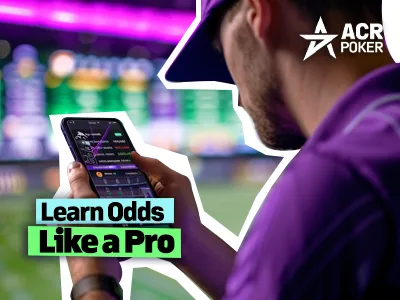Introduction to Odds for Underdog Bets
When bettors place wagers, the odds determine both the potential payout and the perceived likelihood of an outcome. In sports betting, underdogs are often considered riskier choices because they are less likely to win. However, understanding odds for underdog bets provides insight into how bookmakers assign value and how bettors can find opportunities where risk aligns with potential reward.
How Odds Define Underdog Status
Bookmakers use odds to communicate expectations. The underdog is the team or player with a lower probability of winning, reflected in longer odds. For example, in a soccer match, if one team is priced at +250, this indicates a much lower chance of winning compared to a favorite listed at -150. These odds reflect both statistical analysis and market sentiment.
Types of Odds Formats Used for Underdog Bets
Understanding different odds formats is essential when evaluating underdog wagers. Each format represents probability and payout differently:
| Odds Format | Example for Underdog | Meaning |
| American | +250 | A $100 wager pays $250 profit if the underdog wins. |
| Decimal | 3.50 | Every $1 wager returns $3.50 total. |
| Fractional | 5/2 | Every $2 wager earns $5 profit. |
Evaluating Risk Versus Reward in Underdog Odds
Underdog wagers carry higher payouts, but with lower probabilities of winning. Bettors must weigh whether the potential return justifies the risk. When analyzing odds for underdog bets, comparing implied probability with personal research helps determine if the line offers value. For instance, if odds suggest a 28% chance of victory but independent analysis indicates closer to 35%, the underdog may present a favorable opportunity.
The Role of Value in Underdog Wagering
Value betting is central to underdog strategies. Bettors who identify lines where the bookmaker underestimates the underdog’s true chances can capitalize on mispricing. Finding value does not guarantee consistent wins but helps bettors stay profitable over time. Consistently identifying underdogs with higher probabilities than the odds reflect creates long-term advantage.
Situations That Improve Underdog Odds
Several factors can increase the chances of underdogs outperforming expectations. Bettors often look for these conditions when assessing wagers:
- Home advantage: Underdogs playing on home ground may perform better than anticipated.
- Injuries or suspensions: If favorites are missing key players, the balance of power shifts.
- Motivational edge: Rivalry games or playoff implications often inspire underdogs.
- Market overreaction: Public sentiment may inflate favorite odds, creating underdog value.
Calculating Implied Probability for Underdog Odds
One of the most important skills in betting is converting odds into implied probability. This allows bettors to compare bookmaker predictions with their own analysis.
- American Odds +250: Implied probability = 100 ÷ (250 + 100) = 28.5%
- Decimal Odds 3.50: Implied probability = 1 ÷ 3.50 = 28.5%
- Fractional Odds 5/2: Implied probability = 2 ÷ (5+2) = 28.5%
By comparing these implied percentages with actual expectations, bettors can identify when odds for underdog bets provide true value.
Bankroll Management When Betting on Underdogs
Because underdog bets are less likely to win, careful bankroll management is critical. Bettors are advised to use strategies such as flat betting or percentage staking. These methods limit risk by ensuring no single wager jeopardizes overall funds. Understanding variance is also essential, as underdog-focused strategies often involve longer losing streaks before big wins materialize.
Psychological Factors in Betting Underdogs
Public perception plays a significant role in setting lines. Casual bettors often favor favorites, creating skewed markets that add value to underdogs. Recognizing how psychology influences odds allows bettors to understand why certain lines may appear inflated. By focusing on analysis rather than emotion, bettors can identify when underdogs are undervalued.
Conclusion on Odds for Underdog Bets
Analyzing odds for underdog bets helps bettors make informed decisions by evaluating probability, risk, and value. While underdogs win less frequently, the payouts and potential for market inefficiencies create opportunities. By learning to interpret odds, calculate implied probability, and apply disciplined bankroll management, bettors can approach underdog wagers with a strategic perspective that improves long-term outcomes.

